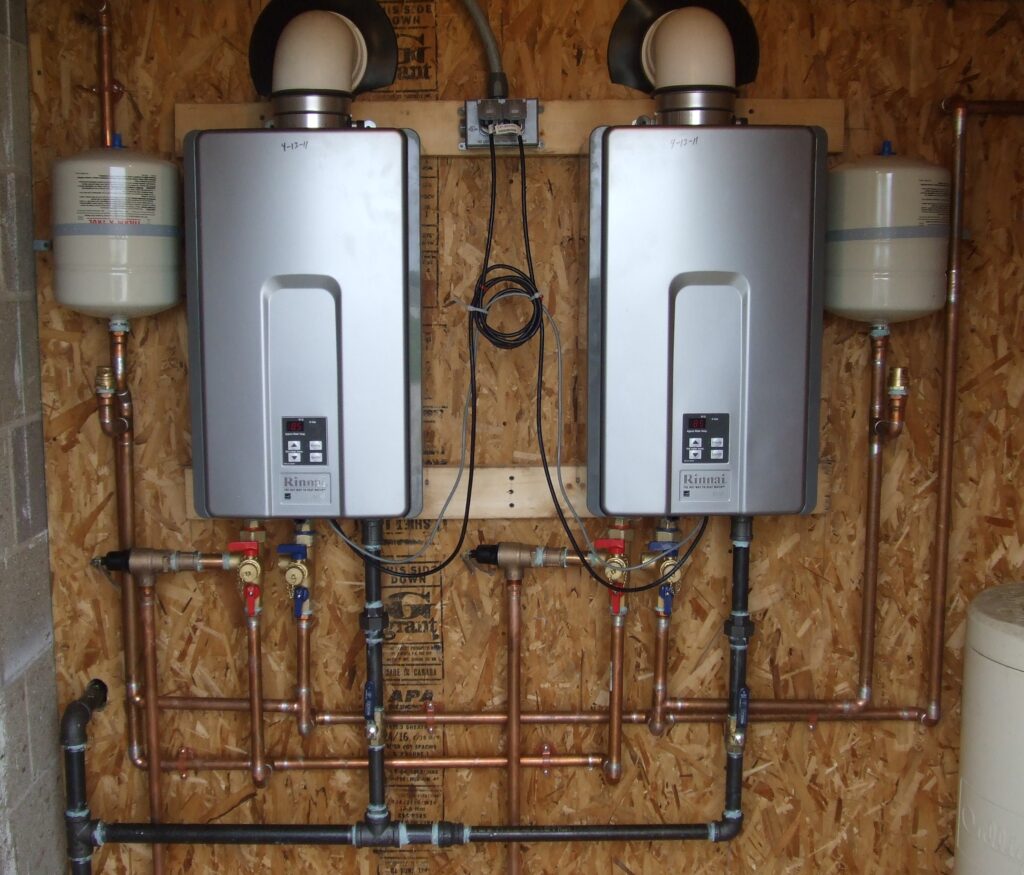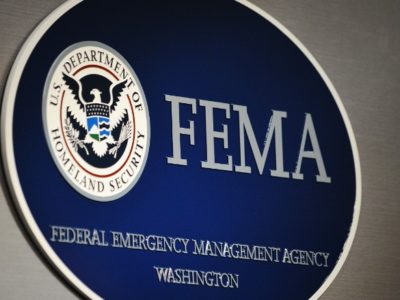State Air Regulations Can Go Above and Beyond National Standards
State and local regulators can and should work to reduce particulate matter, ozone, and NOx emissions even when national standards are met.

States and local air quality regulators have the legal authority to set particulate matter (PM), ozone, and nitrogen oxides (NOx) emissions standards and adopt regulations for these pollutants when they are already in attainment of the national ambient air quality standards (NAAQS) set by the U.S. Environmental Protection Agency (EPA) under the federal Clean Air Act (CAA). PM, ozone, and NOx are harmful pollutants that cause severe health effects that can range from respiratory ailments to cardiovascular harm and even premature death; these health harms disproportionately impact low-income communities of color. NOx are also a precursor to PM and ozone pollution (and are regulated as such). When an area is in nonattainment of the NAAQS, a state is required to design control measures to come into attainment. But PM, ozone, and NOx contribute to health and environmental harms even in areas that meet the NAAQS. Regulators in those areas can and should work to achieve further pollution reductions through continued regulation.
States have two potential regulatory pathways to do so: First, if a state has not adopted air quality standards that are more stringent than the federal NAAQS, the CAA allows states to continue to adopt new rules as a part of their State Implementation Plan (SIP) to drive continued maintenance of the federal NAAQS. Second, states can adopt new rules independently of the SIP process. If a state has adopted its own more stringent air quality standards, the CAA grants states the discretion to regulate to achieve those standards (as a part of their SIP or otherwise) even when they meet the NAAQS. States can also implement regulations independent of stricter statewide air quality standards to improve air quality.
Legal Analysis
Below, I’ll address these two regulatory pathways in turn, primarily focusing on the question of whether state and local air quality regulators can choose to adopt additional pollutant reduction regulations when an area is in attainment of the NAAQS—even when the state doesn’t have its own, more stringent ambient air quality standards.
States’ Duty to Maintain Attainment Status
States that don’t have air quality standards that are more stringent than the federal NAAQS can continue to adopt new rules as a part of a SIP, per CAA authority, to demonstrate continued maintenance of the federal NAAQS. In fact, the CAA encourages ongoing regulation of criteria pollutants and their precursors to prevent deterioration of air quality and maintain clean air, even in areas already meeting the NAAQS.
The CAA’s emphasis on not just “reduction” but “elimination” of pollutants begins in its preamble, where Congress highlights pollution prevention as a key strategy for air quality management and provides the legal foundation for states’ and local governments’ roles. That theme continues throughout, from the Prevention of Significant Deterioration program, which helps protect attainment areas from pollution caused by new sources, to ongoing monitoring requirements for attainment areas. And anytime there is a new or revised NAAQS, CAA § 110 requires states to submit pollution control plans, called State Implementation Plans (SIPs), that “provide[] for implementation, maintenance, and enforcement” of the NAAQS (emphasis added). All states must submit SIPs, regardless of attainment status. States that have always been in attainment are required to enumerate in their SIPs the control measures the states will enforce to maintain attainment of the NAAQS.
Section 175A of the CAA also requires areas that are redesignated from nonattainment to attainment to continue monitoring emissions; those areas must continue to regulate pollutants in order to stay in attainment. A former nonattainment region with monitoring data showing that it currently attains an air quality standard can submit a “redesignation request” and “maintenance plan” as a revision to its SIP. The maintenance plan outlines how the area will continue to meet the NAAQS for at least 10 years after redesignation to attainment. And eight years after redesignation, states must submit another SIP revision showing how they will maintain the NAAQS for 10 years after the expiration of the initial 10-year period. A maintenance plan consists of a future year emissions inventory, an attainment year emissions inventory, provisions for continued operation of the monitoring network, verification of continued attainment, and a contingency plan. The future year emissions inventory includes an accounting of the state’s ongoing regulatory choices to keep the area in maintenance. This means that states have an ongoing obligation to regulate (and even add new regulations) when that’s needed to maintain the NAAQS.
As a part of the contingency plan, states and/or local air regulators must identify measures they will take in the event of a NAAQS violation. But state air regulators don’t need to wait until an area falls out of maintenance to adopt new rules ensuring the NAAQS can be met. In EPA’s final approval of the Detroit, Michigan area’s redesignation request and maintenance plan in May, the agency indicated that states may adopt control measures prior to the actual triggering of a maintenance plan contingency provision. In response to a comment contending that Michigan’s maintenance plan allows the state “too much discretion in selecting and implementing contingency provisions,” EPA explained that already-adopted control measures can help an area achieve a quick turnaround back to attainment when there are issues:
The emissions reductions from these programs…can be achieved more quickly since the State has already gone through the adoption process. To prohibit a State from using any control measure adopted prior to the actual triggering of a maintenance plan contingency provision would only penalize states that are proactive in addressing anticipated air quality problems.
Some courts have even interpreted CAA Sections 175A(d), 182(b), and 172(c)(1) to mean that states seeking redesignation for ozone and PM2.5 must provide for the implementation of reasonably available control measures (RACM) and reasonably available control technology (RACT) —which are applicable to nonattainment areas—in their SIPs (e.g., the Sixth Circuit Court of Appeals in Wall v. U.S. E.P.A. and Sierra Club v. U.S. E.P.A.).
Washington and Ohio are two examples of states that have adopted new rules, even for areas that are already in maintenance or attainment of the NAAQS. Washington has adopted California’s clean car standards, even though most of the state (except for Whatcom County) is in maintenance for all the NAAQS. Washington’s adoption of these stricter standards comes on the heels of the termination of its emission testing program in 2020 due to the state’s significant improvement in air quality and almost statewide NAAQS attainment. The state’s Department of Ecology has expressed confidence that “air quality is going to improve, even without this program [as] new cars [become] cleaner,” and as the state “continue[s] to reduce greenhouse gas emissions from motor vehicles — the largest source of carbon pollution in Washington.” Washington’s clean car rule shows how even where air quality has markedly improved, some states are still continuing to adopt forward-thinking regulations. Additionally, Ohio adopted a rule in 2022 limiting the emissions of NOx from stationary industrial sources. Some areas of the state are in nonattainment for ozone, while others are in maintenance. And while the rule is intended to help bring the nonattainment areas into attainment, it also applies in maintenance areas.
State Discretion to Pursue Cleaner Air Quality than the NAAQS
The CAA also affords states discretion to pursue air quality that exceeds the federal NAAQS, even if the federal NAAQS have already been met. States can do this by setting standards that go beyond the federal NAAQS and implementing regulations designed to attain those standards. They can also implement regulations independent of more stringent air quality standards as a way of achieving cleaner air quality. According to CAA § 116, “[n]othing in this chapter shall preclude or deny the right of any State or political subdivision thereof to adopt or enforce (1) any standard or limitation respecting emissions of air pollutants or (2) any requirement respecting control or abatement of air pollution[.]” The Supreme Court in Union Electric Company v. E.P.A., 427 U.S. 246, 265 (1976) has also made clear that “[s]tates may submit implementation plans more stringent than federal law requires[.]” Thus, the CAA sets a floor for regulation of air pollution, not a ceiling.
For instance, the California Health and Safety Code provides California air districts with authority to regulate air pollutants, including the option to adopt stricter emission limits than those set by both EPA and the California Air Resources Board. California’s SIP includes air district plans to meet both the NAAQS and California’s own tougher ambient air quality standards. Once more stringent standards are included in a state’s SIP and approved by EPA, they become federally enforceable. And states have “the power to determine which sources [are] burdened by regulation and to what extent[,]” giving them broad discretion to select the control measures they’ll include in a SIP. So if a state already has, or chooses to adopt, regulations for PM, ozone, and NOx that go beyond the NAAQS, local air regulators are well within their rights to press for additional pollutant reductions even when the NAAQS have been met.
States can also elect to enact standalone regulations that are not a part of their SIP. This authority stems not only from the CAA, but also from the Tenth Amendment of the U.S. Constitution, which reserves to states all powers not expressly delegated to the federal government. These powers include broad authority to protect public health, safety, and welfare, known as “the police power,” which encompasses the ability to enact standards and rules to reduce air pollution. States’ own constitutions and statutes may further define the scope of their regulatory authority, establish the legal framework for enacting regulations, and delegate authority to specific state agencies to regulate emissions. Such standalone regulations would be enforceable only by the state and not by the federal government. In order for these regulations to be effective, states should ensure that they are well-grounded in state law and comply (and don’t conflict) with relevant federal laws and constitutional principles to avoid legal challenges and preemption issues.
Conclusion
The CAA is structured not only to achieve air quality standards, but also to prevent air pollution and maintain standards over the long term. For this reason, the Act allows states wide discretion to enact regulations designed to improve air quality, even in states currently in attainment with the federal NAAQS. Given the substantial health harms from PM, ozone, and NOx even at levels below the NAAQS, state regulators should continue to proactively regulate these emissions using all of the tools available.







Reader Comments